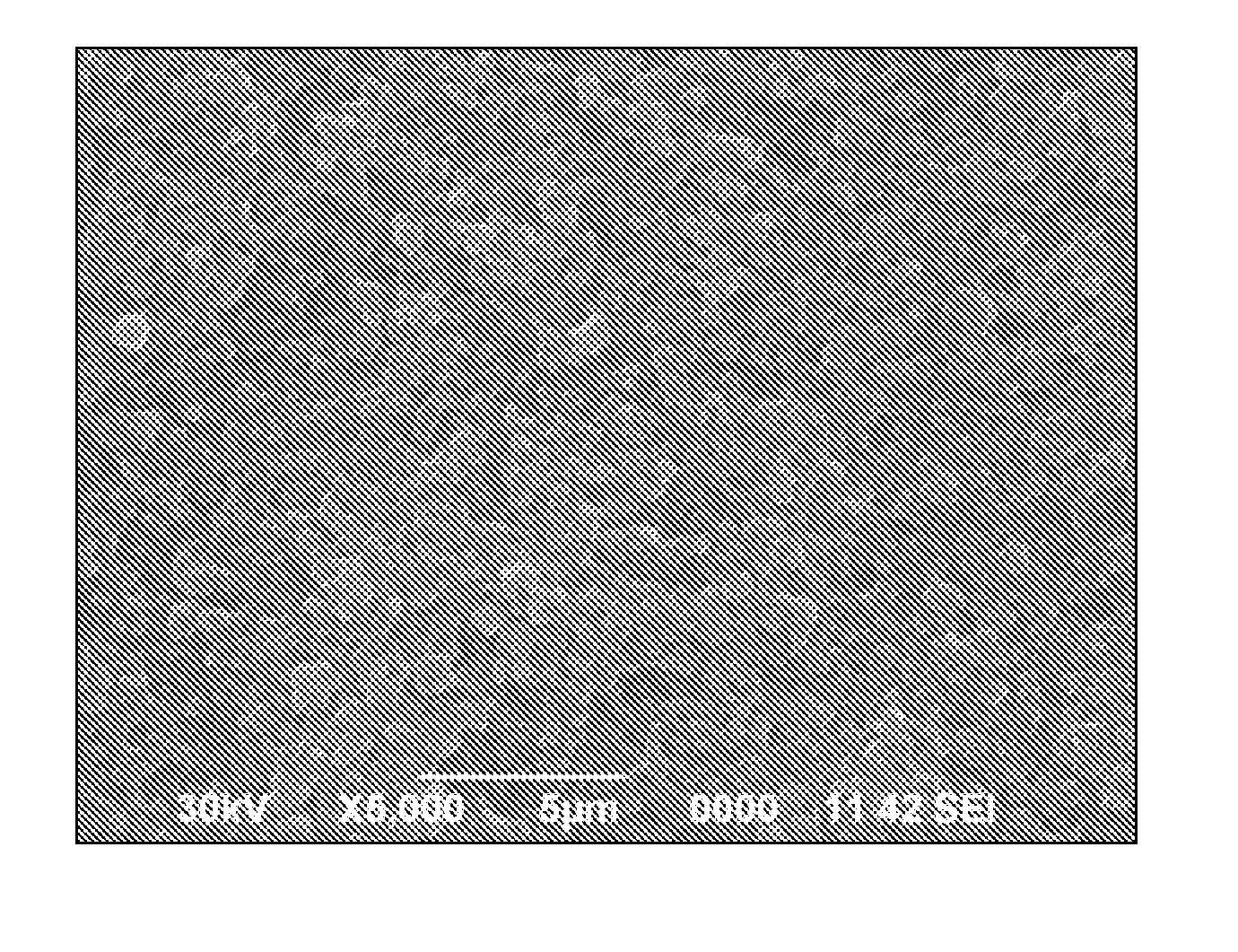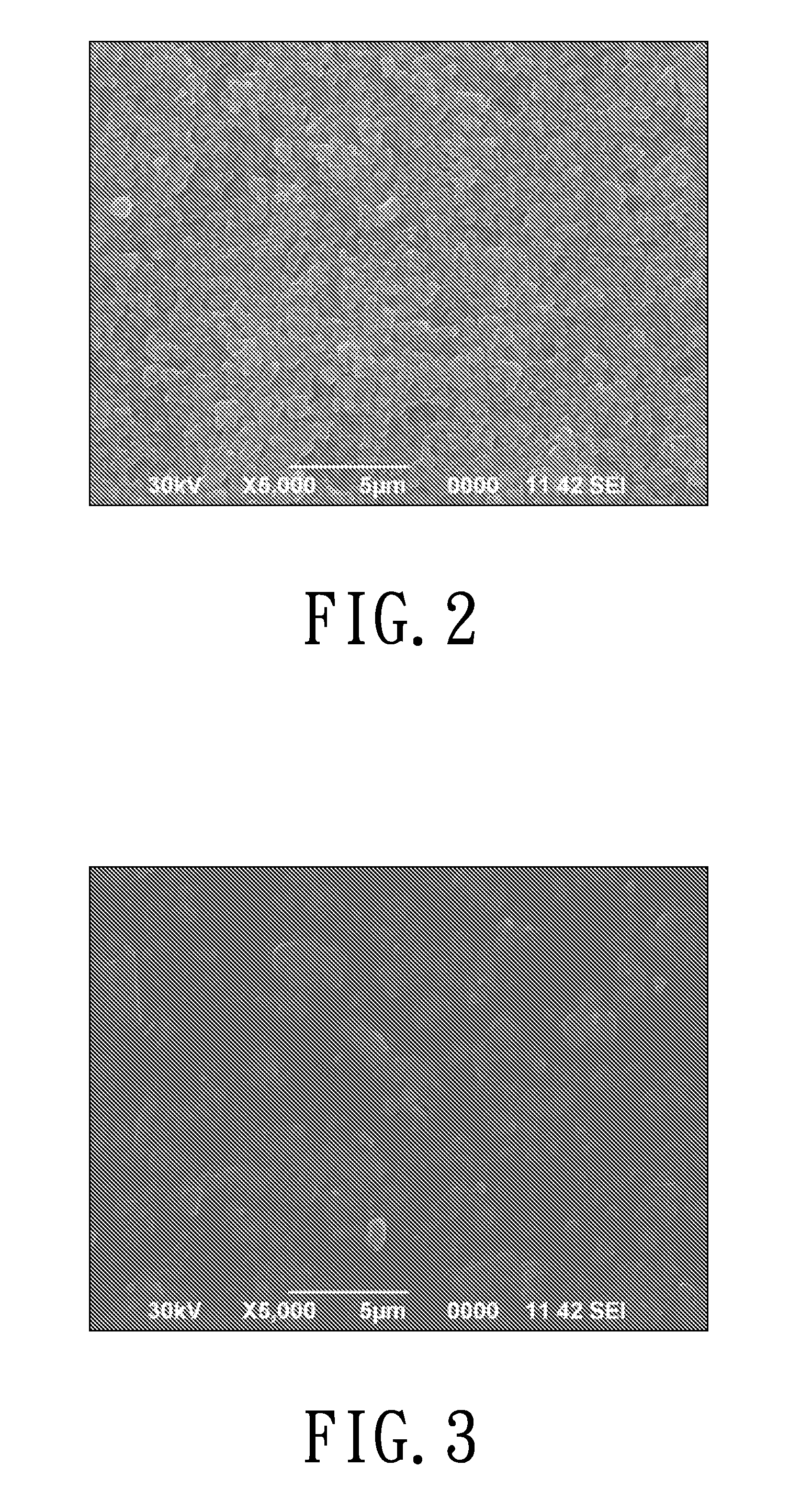Lithium-Ion Battery
a lithium-ion battery and lithium-ion technology, applied in the field of lithium-ion batteries, can solve the problems of irreversible battery operation, single cell over-discharging, and battery short-circuit between the electrodes, and achieve the effect of preventing the battery from internal short-circuit, improving the function of lithium-ion conduction, and increasing the recycle life of the battery
- Summary
- Abstract
- Description
- Claims
- Application Information
AI Technical Summary
Benefits of technology
Problems solved by technology
Method used
Image
Examples
embodiment 1
Preparation of Ion-Selective Conducting Membrane Containing Li3PO4
[0043]Grind lithium phosphate powders to a particle size D50=4 μm by way of ball milling. Dissolve 52.4 g polyvinylidene fluoride-hexafluoropropylene (PVDF-HFP) in a solvent of 149.2 g acetone and 200 g 1-methyl-2-pyrrolidone (NMP). Stir the solution until polyvinylidene fluoride is completely dissolved. Then add 78.6 g lithium phosphate powders into the solution, and further grind and disperse the resulting solution until the slurry is well mixed. Filter the slurry to remove bubbles, and transfer the slurry to a film casting machine to be casted into a film on a smooth surface of the base membrane. After being dried, the film becomes a dense film having thickness of 20 μm. The surface of the dense film in contact with the base membrane is smoother and denser than the opposite rough surface. Carry out a morphology analysis for the surface of the membrane by way of the scanning electron microscopy (SEM), as shown in F...
embodiment 2
Ionic Conductivity Tests
[0046]Immerse the ion-selective conducting membrane containing Li3PO4 as prepared in Embodiment 1 and the membrane Celgard 2320 (both 20 μm in thickness) fully in the electrolyte solution (LiPF6 / EC-DEC, EC to DEC volume ratio 1:1). Clamp the membrane between two blocking electrodes formed of stainless steel sheets in a glove box at argon atmosphere. At room temperature, carry out an EIS test in an electrochemical workstation. The resulting date are shown in FIG. 8, in which the solid line represents the variation curve of the EIS of the ion-selective conducting membrane containing Li3PO4, and the dotted line represents the variation curve of the EIS of the membrane Celgard 2320. It can be seen from FIG. 8 that the pure resistance of the dense membrane prepared in Embodiment 1 is smaller than that of the membrane Celgard 2320, and the conductivity of lithium ions of the dense membrane is higher than that of the membrane Celgard 2320.
embodiment 3
Preparation of Lithium-Ion Battery Including the Li3PO4 Ion-Selective Conducting Membrane
[0047]For preparing the positive electrode, the active material lithium iron phosphate (including 87 wt % LiFePO4, 5 wt % conductive carbon black, 8 wt % polyvinylidene fluoride ethylene (PVDF) adhesive) is well dispersed in the N-methyl-2-pyrrolidone (NMP) solution according to a specified ratio to obtain mixed slurry of the positive electrode. Then, coat the mixed slurry on an aluminum foil serving as the positive current collector, and dry and roll it to obtain the positive electrode.
[0048]For preparing the negative electrode, the active material, including 92 wt % charcoal powder, 2 wt % conductive carbon black, 6 wt % polyvinylidene fluoride ethylene (PVDF) adhesive, is well dispersed in the N-methyl-2-pyrrolidone (NMP) solution according to a specified ration to obtain mixed slurry of the negative electrode. Then, coat the mixed slurry on copper foils of the negative current collector, and...
PUM
 Login to View More
Login to View More Abstract
Description
Claims
Application Information
 Login to View More
Login to View More - R&D
- Intellectual Property
- Life Sciences
- Materials
- Tech Scout
- Unparalleled Data Quality
- Higher Quality Content
- 60% Fewer Hallucinations
Browse by: Latest US Patents, China's latest patents, Technical Efficacy Thesaurus, Application Domain, Technology Topic, Popular Technical Reports.
© 2025 PatSnap. All rights reserved.Legal|Privacy policy|Modern Slavery Act Transparency Statement|Sitemap|About US| Contact US: help@patsnap.com



